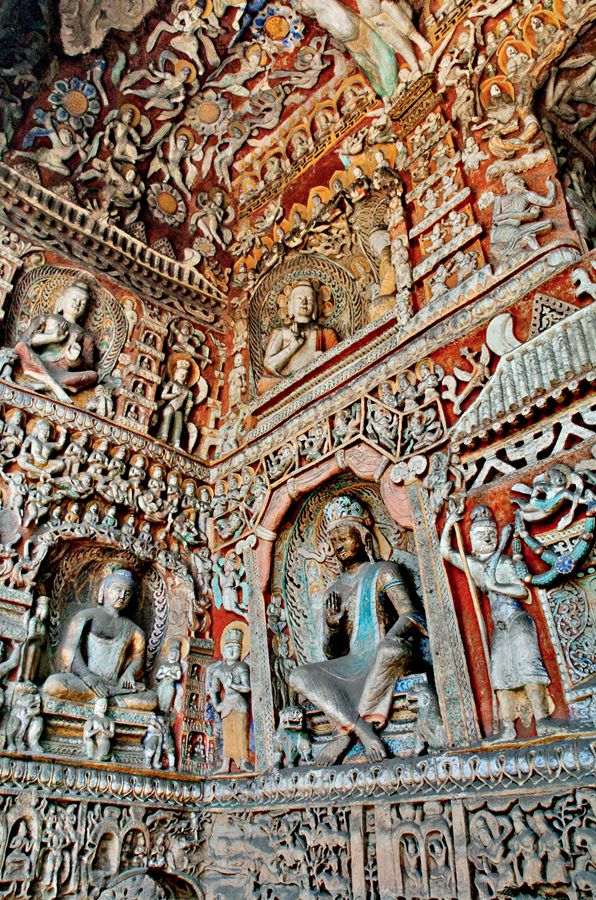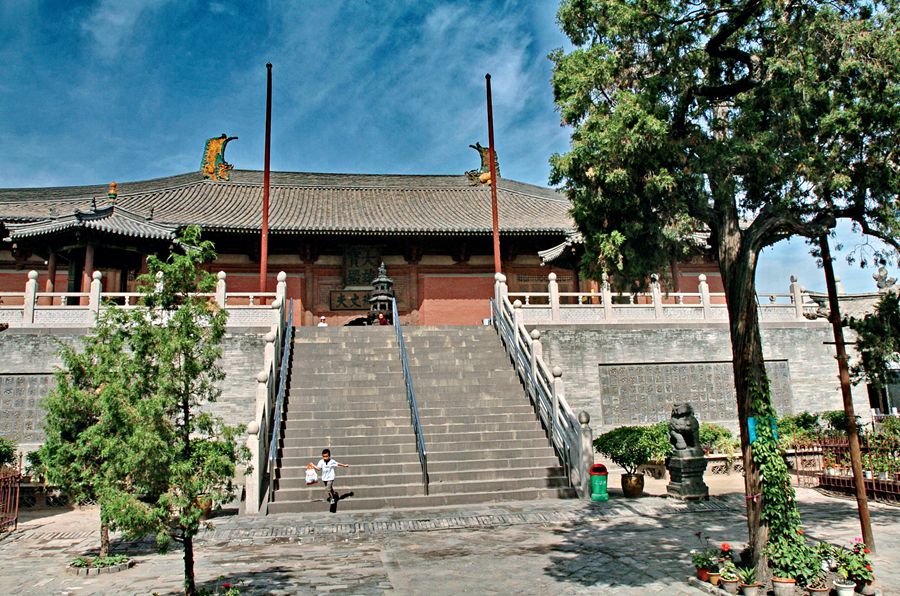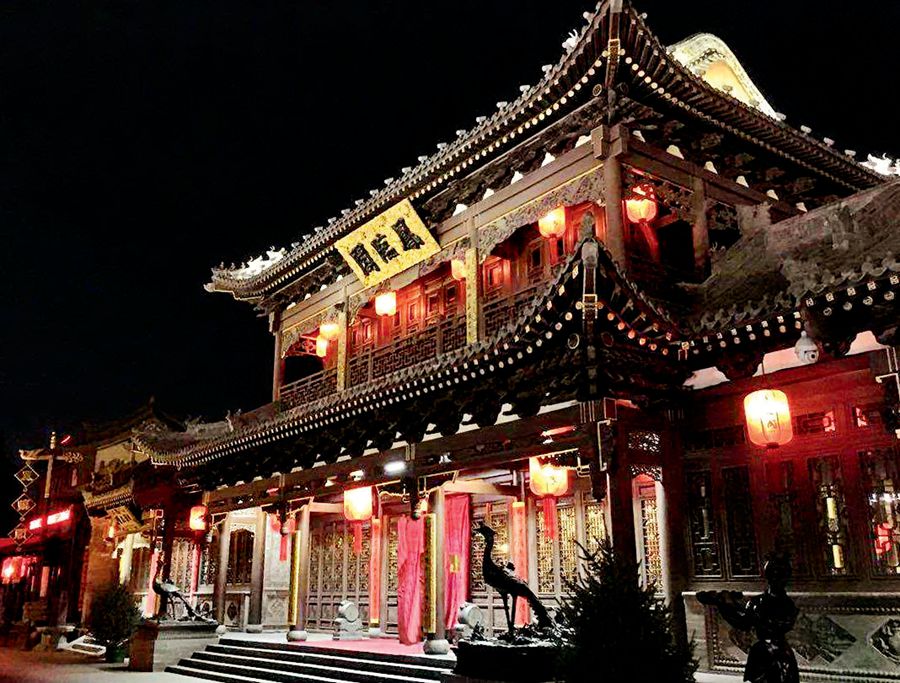Yungang Grottoes

Stretching one km from the east to the west in the western suburb of Datong, the Yungang Grottoes are magnificently carved on large rocks at the southern foot of Mount Wuzhou. It has 45 main grottoes, 252 caves and niches and 51,000 statues carved from the year 460 to 524. They vividly recorded the expansion of Buddhism from India and Central Asia to China, in which distinctive Chinese character and local spirit had been incorporated. The grottoes are massive and magnificent, representing the outstanding achievement of Buddhist cave art in China in the fifth and sixth centuries. In 2001, the site was added to the UNESCO World Heritage List.
Transportation: Take the Express Bus Line 603
Mount Hengshan
It is located in the southeast of Datong, 62 km away from the downtown area. One of the five sacred mountains in China, Mount Hengshan is a landmark in north China and a holy place of Taoism. It has been recognized as national natural and cultural heritage. The main peak seats a group of grand temples which date back thousands of years. Steles with calligraphic inscriptions are ubiquitous.
The Hanging Temple, representing an integration of Buddhism, Taoism, and Confucianism, enjoys a history of some 1,500 years. Facing the main peak and backed by Cuiping Mountain, the temple appears suspended in the air with imposing rocks on the top and deep valleys below. The ingenious structure makes it a rare masterpiece in ancient Chinese architecture.
Transportation: Take the shuttle bus between Datong Bus Station and the Hanging Temple.
Huayan Temple

Located in the west of Datong’s ancient city, the Huayan Temple comprises two parts. It was first built in 1038 and named after a Buddhist sutra. It used to serve as the royal ancestral temple during the Liao Dynasty (907-1125). Ruined in wars, the temple was rebuilt in 1140. There are two main buildings of the Great Buddha Hall and the Bhagavad Hall. The latter one features well-designed layout, and retains 31 statues from the Liao Dynasty in good conditions. Among them, the Bodhisattva with palms put together in front of the chest and smile on the face is particularly elegant and exquisite, and embodies the highest artistic value. With buildings, statues and murals of unique styles and artistic value, the Huayan Temple is widely recognized as invaluable artistic treasures of the Liao and Jin dynasties.
Transportation: Take Bus Line 4 to Qingyuan Street stop.
Wild Geese Pagoda

It was a seven-storey brick pagoda built in 1624 on the southeast of the city walls. Originally called Wenfeng Pagoda, the 14-meter-high building changed to the present name as wild geese used to gather there in spring and summer. The pagoda was classified as a Confucius temple, where scholars having passed the imperial civil-service exam in feudal China worshipped and received tributes from the public. The three-storey foundation is made of grey stones. As for the main building, the first storey has two doors on two sides and steles inscribed with the names, address, and rankings of scholars that passed the imperial civil-service exam on the other six sides to inspire later generations. From the second storey upward, there are four windows on each storey, arranged in a staggered pattern with those on the storeys above and below. The pagoda also features brick-made dougong, a system of brackets inserted between the top of a column and a crossbeam in Chinese classic architecture, at each storey. Wind bells decorate the overhanging eaves extending from the dougongs. In ancient times when the city was plagued by incessant wars, the pagoda also served as a watchtower.
Transportation: Take Bus Line 38 or 70 to Heyangmen South stop and walk to the pagoda.
Fenglinge Restaurant

Located at the crossing of Gulou West Street and Huayan Street, Fenglinge Restaurant boasts a history of some 500 years. It has been an attractive spot for celebrities and gourmands. A variety of Datong dishes and snacks are available in this antique restaurant. Reserve a table in advance as the restaurant is always in high demand.
How to get: Walk 280 meters southward from the Huayan Temple.



